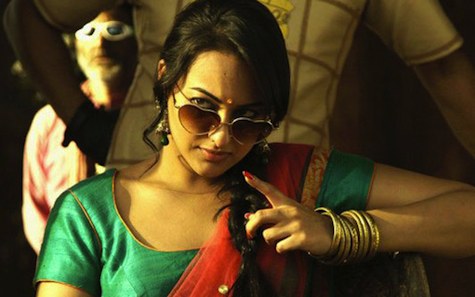More often than not, knowledge of a movie’s troubled production history is more a cloud hanging over one’s appreciation of that movie than a tool for insight into it. Earlier this year, for example, with the ill-fated John Carter, it seemed as though critics were not permitted to write about the picture without mentioning that it cost A QUARTER OF A BILLION DOLLARS (and yes, the all-caps were mandatory as well). The movie itself was hardly perfect, but I doubt whether anyone would have been quite as concerned with how expensive it was without being told first.
Indian writer-director Shirish Kunder faced similar negative advanced press for his film Joker, which was released worldwide on August 31st, although release dates as early as October 2011 had been announced and then postponed. Kunder had also intended to shoot with 3D cameras (a lot of the images and compositions look as though it was indeed shot stereoscopically), though after the post-production delays allowed other Hindi blockbusters to experiment unsuccessfully with post-converted 3D, Joker’s producers abandoned their plans to exhibit in 3D. On top of all that, Joker is surprisingly short, at under an hour and forty minutes, for not only Indian cinema—famous for its three-plus-hour running times and intermissions—but in the West these days as well. And it’s never a good sign when the leading actor refuses to do any publicity. But, really, when all of this drama is said and done, how much of this drama is reflected in Joker itself, as a movie?
The answer is: not a whole lot. It is quite short, especially since even at its brief running time it has room for three full-on song picturisations. That brevity, and the absence of the customary subplots and abrupt complete tonal shifts makes Joker feel a bit more like a Western movie than masala in terms of form. The story, though, is gloriously crazy: the hero, scientist Agastya (Akshay Kumar) lives in America working on contacting and communicating with extraterrestrial life, unsuccessfully. His girlfriend Deewa (the luminous Sonakshi Sinha) tells Agastya his father is in dire shape and that they have to return to Agastya’s home town in India, which, as he reluctantly informs her on the trip over, does not officially exist, having been home to an insane asylum whose inmates escaped on the night a cartographer arrived to put it on the map. (In his haste to escape, the cartographer simply drew the border between India and Pakistan right through the town.) Agastya is faced, upon return to the very odd village of Paglapur, with the task of establishing it as a thing that exists, and making sure it continues to do so. Fake crop circles, the possibility that the village is sitting on top of a massive oil reserve, the credulity of the media, sinister white people, and what appears to be the entire Indian military figure in the ensuing shenanigans.
“Shenanigans” is—and this is meant in a more celebratory than dismissive way—the best way to describe Joker. Its story is barely even a story. Leading actor Akshay Kumar is visibly disengaged for long stretches, although he’s a sufficiently charismatic actor, arguably the greatest non-Three Khans star in India, that he can (barely) coast on star power. There are any number of events, and even major plot points, that don’t make a lick of coherent sense.
In spite of all that, there’s plenty to like in Joker. The villagers, most of them now the grandchildren of the original asylum escapees, are endearingly out of their minds, with an (eventually explained) ability to do things like fall out of the top branches of trees and hit the ground without so much as a bruise. Kunder’s script, for all its foibles, does make a compelling case for the “other,” likening outsiders such as the Paglapur villagers to the joker in a deck of cards—hence the movie’s title—and explicitly, through Agastya’s scientific work, to aliens. That level of sympathy for the holy fool, for the joker in the deck, the alien (which is, even more so after the movie’s release, Kunder’s own role within the Indian film industry) goes a long way toward making Joker an engaging, fluffy bit of escapism.
It’s not often one wishes a movie were a half hour longer, but I do so wish with Joker. There appears to have been a romantic subplot edited out that I’d have liked to see put back in between a villager who speaks (apparently) his own language and a pretty TV newswoman who arrives to cover the crop circle story. And the antagonism between Agastya and office rival Simon (Alexx O’Nell) isn’t as well developed as it might have been, were there a subplot going deeper into Simon’s villainous machinations. I propose that if a movie leaves you wanting more, there’s something good going on. While I’d definitely recommend Shirish Kunder’s first directorial effort, Jaan-E-Mann, and even Tees Maar Khan (which Kunder scripted, with his wife, Farah Khan directing) over Joker, there have certainly been many, many science fiction comedies less endearing than this. Joker may be a mess, but it’s a mess whose heart is certainly in the right place, and deserves far better than the critical drubbing it’s received from Indian critics.
Also, this item number starring the lovely Chitraganda Singh is tops (and no, the title doesn’t mean what you think it means, it means “I Want Just You”):
Danny Bowes is a New York City-based film critic and blogger.










